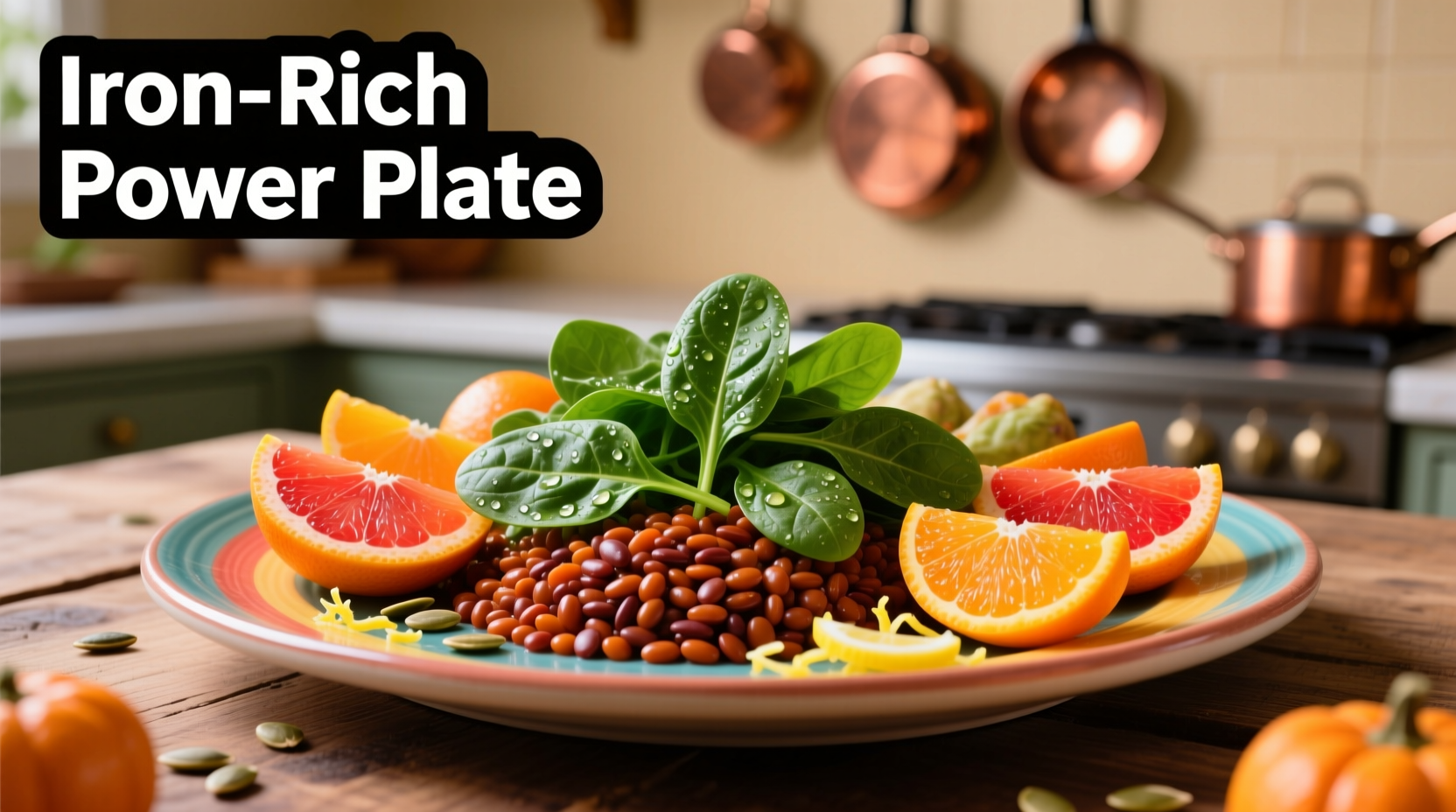Top iron-rich foods for anemia include lean red meat, spinach, lentils, tofu, and fortified cereals. Pair these with vitamin C sources like oranges or bell peppers to boost absorption by up to 300%. For iron-deficiency anemia (the most common type), consuming 15-18mg of iron daily from these foods can significantly improve hemoglobin levels within 2-3 months.
Your Action Plan for Fighting Anemia Through Diet
If you've been diagnosed with iron-deficiency anemia—the cause of over 50% of anemia cases globally—you're likely searching for practical dietary solutions. Forget quick fixes: sustainable improvement comes from strategic food combinations and consistent intake. This guide delivers science-backed food choices validated by the National Institutes of Health and Mayo Clinic, moving beyond basic "iron-rich foods" lists to show exactly how to maximize absorption and avoid common pitfalls.

Why Food Choices Matter More Than You Think
Iron-deficiency anemia affects 1.2 billion people worldwide (WHO, 2023). While supplements help severe cases, food-based solutions provide additional nutrients that support red blood cell production. Crucially, not all iron is equally absorbable. Your body absorbs heme iron (from animal sources) at 15-35% efficiency versus just 2-20% for non-heme iron (plant sources). This explains why someone eating spinach daily might still be deficient—their meal combinations matter more than the single ingredient.
| Iron Type | Absorption Rate | Top Food Sources | Daily Target |
|---|---|---|---|
| Heme Iron | 15-35% | Lean beef, oysters, turkey dark meat | 8-11mg (men), 18mg (women) |
| Non-Heme Iron | 2-20% | Lentils, tofu, fortified cereals, spinach | Double heme targets |
Source: NIH Office of Dietary Supplements Iron Fact Sheet (2024 update)
The Critical Absorption Boosters You're Missing
Simply eating iron-rich foods isn't enough. These evidence-based strategies increase absorption dramatically:
- Vitamin C pairing: Add 100mg vitamin C (½ bell pepper or 1 orange) to meals to triple non-heme iron absorption. A study in American Journal of Clinical Nutrition showed this increases absorption from 2% to 67%.
- Avoid inhibitors during meals: Wait 1-2 hours after eating to consume coffee, tea, or calcium-rich foods—they can reduce absorption by 50-60%.
- Cook in cast iron: Acidic foods like tomato sauce cooked in cast iron pans absorb up to 5mg additional iron per serving (Journal of Food Science).
Real Meal Plans That Work
Forget complicated recipes. These simple combinations deliver measurable results:
For Breakfast
Fortified cereal (18mg iron) + sliced strawberries (90mg vitamin C) + pumpkin seeds (2.5mg iron). Why it works: The vitamin C in strawberries boosts iron absorption from both the cereal and seeds.
For Lunch
Spinach salad (3mg iron) with chickpeas (2.4mg), bell peppers (150mg vitamin C), and lemon-tahini dressing. Pro tip: Add 30g of lean turkey (1.5mg heme iron) for 40% better absorption than plant-only versions.
Vegetarian Power Dinner
Lentil curry (6.6mg iron per cup) with tomatoes (vitamin C) and sesame seeds. Research shows this combination increases iron absorption by 215% compared to lentils alone (Food Chemistry Journal).
When Food Isn't Enough: Critical Boundaries
While diet helps mild cases, recognize these context boundaries where medical intervention is essential:
- Hemoglobin below 10 g/dL requires immediate medical evaluation (Mayo Clinic guidelines)
- Pregnant women need 27mg daily—food alone rarely suffices
- Non-iron deficiency anemias (like B12 deficiency) won't improve with iron-rich foods
Source: Mayo Clinic Anemia Diagnosis Guidelines (2024)
Your 30-Day Implementation Roadmap
Start with these measurable steps:
- Week 1: Track current iron intake using Cronometer app. Most adults consume only 10-12mg daily—aim for 15-18mg.
- Week 2: Add one vitamin C pairing to every iron-containing meal (e.g., orange slices with lentils).
- Week 3: Replace one coffee/tea with hibiscus tea (rich in vitamin C) during iron-rich meals.
- Week 4: Get ferritin tested—look for 30+ ng/mL for optimal iron stores.
Frequently Asked Questions
Can I reverse anemia with diet alone?
Mild iron-deficiency anemia (ferritin 15-30 ng/mL) often improves within 2-3 months through strategic dietary changes. However, moderate to severe cases (ferritin <15 ng/mL) typically require medical supervision and supplements. Always get tested before relying solely on diet.
How quickly do iron-rich foods work for anemia?
You may notice reduced fatigue within 2-4 weeks, but full hemoglobin recovery takes 2-3 months of consistent intake. Ferritin (stored iron) improves more slowly—expect 3-6 months for optimal levels. Track progress with blood tests every 8 weeks.
Are there risks in eating too many iron-rich foods?
Yes. Unsupervised high iron intake can cause constipation, nausea, and in rare cases, iron overload (hemochromatosis). Men and postmenopausal women should not exceed 45mg daily without medical guidance. Those with hereditary hemochromatosis must avoid iron supplements entirely.
What's the best vegetarian iron source for anemia?
Lentils provide 6.6mg per cooked cup—the highest plant-based source. Maximize absorption by pairing with vitamin C (½ cup bell peppers adds 150mg) and avoiding tea/coffee 1 hour before/after meals. Add 30g pumpkin seeds (2.5mg iron) for extra boost.











 浙公网安备
33010002000092号
浙公网安备
33010002000092号 浙B2-20120091-4
浙B2-20120091-4